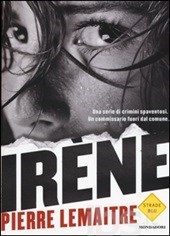I just finished this book – not sure whether it’s a “crime novel” or a “mystery”. Is there a difference? Anyway, it was well written, very clever and suspenseful. The characters it presented were good too. That’s all I have to say about it, other than that the murders it describes are extremely gruesome, but I guess that’s old hat these days, what with Hannibal Lechter, Steven King, and so on.
Well, there’s this too: the killer in the book is staging his crimes to duplicate murder scenes in books he admires. He sees himself as some sort of artist. One of the books, the one with the first murder scene used, is Brett Easton Ellis’ American Psycho. Near the end of the book, the author, the real author, not the would-be author who is murdering women, changes the name of a character so that we might think that all the time we have been reading a text written by the murderer and sent to the character in the book who is chasing him, rather than reading a book about a policeman chasing a murderer who sends him texts… Very meta.
I started reading this sort of book sometime after I started watching film noir, a natural progression I guess. At first, I read books that were the basis of films I’d seen, but now I’ve expanded my range a bit. I’m not sure why they are entertaining; certainly it’s not the gore – that just adds to the suspense somehow.
In the Acknowledgements section of the book, after the end, Lemaitre praises the four novels he references in his narrative. He notes that critics reacted very harshly to Ellis’ book, implying that they are hypocritical for wanting these novels to “exorcise our hyper-violent societies,” while not exceeding the limits of good taste. I am not sure what he means by this other than that authors should be free to write what they like, and if critics don’t like it, but read it anyway, too bad for them. As for “hyper-violent,” I don’t know at all what this means. Compared to what? Medieval towns with public executions, drawing and quartering, bear baiting in the Elizabethan age? Mass starvation? Slavery? It all sounds very French-Intellectual to me: I can just hear those academics intoning about the “violence inherent in the system,” as Monty Python put it, and so on. I think he’s just fascinated by violence and gore, and makes a good living at it. Better than teaching literature, which is what he used to do.




 Posted by Lichanos
Posted by Lichanos 



















